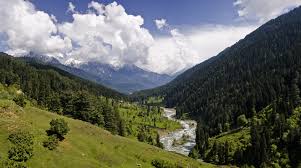Tourism has acquired a bad rep in the eco-conservation community. Any activity that attracts hordes of foreigners or typically non-residents of the region, is considered detrimental to the environment. More people means more waste. Trees and other wild flora are razed to the ground to give way to better infrastructure resulting in deforestation. There is a rise in air, noise and water pollution due to increased use of transportation, electricity and recreational activities.
In light of the ecological damage that the tourism industry has wrought on the environment, there has been a conscious effort to move to sustainable and ecologically sound practices in the tourism industry. Sustainable tourism or environmentally conscious tourism has emerged as a movement to make travel and related activities viable for the environment, the economy and local communities especially in regions rich in biodiversity.
The UN Green Economy Report, 2011 which focuses on “building a new economic paradigm” has found that “tourism, is one of the ten economic sectors best able to kick-start the transition to a sustainable and inclusive green economy.” Additionally, this report surmises that “the greening of tourism, which involves significant investment in efficiency improvements in energy, water and waste systems, would stimulate job creation, especially in poorer communities, with increased local hiring and sourcing, and have a positive spill-over effect on other areas of the economy.” This report also calls on governments to create policies that promote investment in green tourism.
The Ministry of Tourism of the Government of India has identified the following guiding principles in its promotion of eco-tourism in India:
“(a) The local community should be involved leading to the overall economic development of the area;
(b) The likely conflicts between resource use for eco-tourism and the livelihood of local inhabitants should be identified and attempts made to minimize the same;
(c) The type and scale of eco-tourism development should be compatible with the environment and socio-cultural characteristics of the local community, and
(d) It should be planned as a part of the overall area development strategy, guided by an integrated land-use plan avoiding inter-sectoral conflicts and ensuring sectoral integration, associated with a commensurate expansion of public services.”
In an attempt to incentivize eco-tourism to relevant stakeholders-the Ministry of Tourism has introduced different categories of awards such as “Best Eco-Friendly Hotel”, “Best Responsible Tourism Project”, “Best Eco-friendly Practices by Tour Operators” in the National Tourism Awards presented annually to various segments of travel, tourism and the hospitality sector.
Prominent eco-tourism destinations in India include national park and wildlife sanctuaries especially those that are residence to high-density tiger populations. The Ministry of Tourism has commissioned surveys to assess hotels, lodges, resorts, camps and guest houses in and around Corbett National Park conducted by students of the Institute of Hotel Management, Pusa, New Delhi. According to the Ministry of Tourism website, similar surveys have been commissioned around-“Kaziranga National Park, Kanha National Park, Bandhavgarh National Park, Pench Tiger Reserve and Mudumalai Wild LiifeSanctuaryy” and “the survey of the aforesaid parks has come out with first-hand information with regard to impact of tourism activity in and around the national parks and also the blocking of animal corridors.”
The development of eco-tourism in India is still in its nascent stage, but in ecologically fragile regions of India such as states that are home to the Himalayas, states rich in diversity of wildlife and areas that are breeding grounds for rare species of plants and trees, are at the forefront of green tourism and are paving the way to make India a hub for this environmentally conscious tourism.
